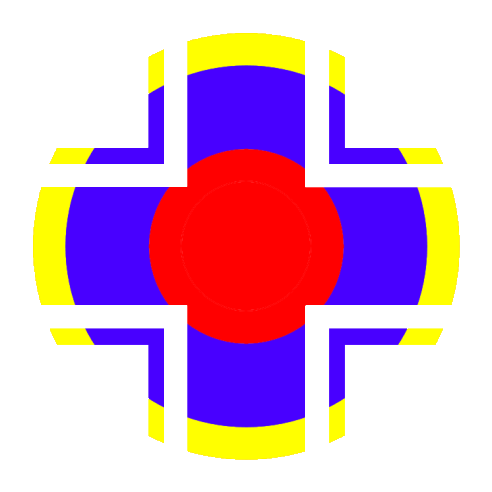(History) |
(Adding categories) |
||
| (14 intermediate revisions by one other user not shown) | |||
| Line 1: | Line 1: | ||
| + | {{Airframe info |
||
| − | '''Werk Nr 10639''' is a Bf 109 which was tested by the Allies during World War 2. |
||
| + | |name='''''{{PAGENAME}}''''' |
||
| + | |image=[[File:Werk_Nr_10639.jpg|thumb|300px]] |
||
| + | |caption=10639 at the time of it's capture.<ref>[http://www.adf-gallery.com.au/gallery/Messerschmitt-Bf109G-10639/Bf_109G2_Black_6_werk_10639_captured_by_3_Sqn_RAAF_1942_001 ADF Gallery]</ref> |
||
| + | |designation=[[:Category:Messerschmitt Bf 109|Messerschmitt Bf 109]] |
||
| + | |version=G-2/Trop |
||
| + | }} |
||
| − | + | =History= |
|
| − | + | ==Middle East== |
|
| − | Originally laid down by Erla at Leipzig as a Bf 109F-3,<ref name="WAIF F199 S05">{{WAIF}} File 199 Sheet 5 (World Military Aircraft:Messerschmitt Bf 109 - Briefing)</ref> 10639 was completed as a G-2/Trop in mid 1942, and |
+ | Originally laid down by Erla at Leipzig as a Bf 109F-3,<ref name="WAIF F199 S05">{{WAIF}} File 199 Sheet 5 (World Military Aircraft:Messerschmitt Bf 109 - Briefing)</ref> 10639 was completed as a G-2/Trop in mid 1942, and sent to Gambut, Libya, joining JG 77 as '''Black 6'''. Shortly after it's arrival in early November, the aircraft sustained combat damage and forced landed at Gambut, where it was abandoned. |
| − | Captured by Australian forces |
+ | Captured by Australian forces soon afterwards, Black 6 was claimed as a trophy by 3 Squadron RAAF, and restored to airworthiness, complete with unit codes '''CV-V'''. The post restoration flight was carried out on 10 November, by 3 Squadron's Commanding Officer, Sqd Ldr Robert 'Bobby' Gibbs. News of the aircraft's exsistance reached 209 Group, whose demand that Black 6 be handed over to them dashed hopes of sending the fighter to Australia for display. Instead, Black 6 was flown to Lyyda, Palestine for evaluation, participating in mock combats with locally based Spitfires during late 1942 and early 1943, before being transported, by sea, to the UK.<ref name="Wings of the Eagle p28">{{Wings of the Eagle}} Page 28</ref> |
| − | + | ==UK== |
|
| + | 10639 arrived at Collyweston on 26 December 1943, and was issued with RAF serial '''RN228'''. After making it's first flight from British soil on 19 February 1944, RN228 remained with 1426 Flight until that unit was disbanded in early 1945, at which point the aircraft began a short stint with the Tangmere based Enemy Aircraft Flight of the Central Fighter Establishment. Following the end of the war, the aircraft did the usual round of displays and storage, taking in the 1949 Horse Guards Parade, and spending time at Sealand, Stanmore Park Wroughton and Fulbeck.<ref name="Wings of the Eagle p28"/> |
||
| − | |||
| − | + | =References= |
|
<references/> |
<references/> |
||
| − | [[Category: |
+ | [[Category:World War 2]] |
| − | [[Category: |
+ | [[Category:1426 Flight]] |
| + | [[Category:Messerschmitt Bf 109]] |
||
| + | [[Category:Central Fighter Establishment]] |
||
Latest revision as of 23:20, 24 January 2018
History[]
Middle East[]
Originally laid down by Erla at Leipzig as a Bf 109F-3,[2] 10639 was completed as a G-2/Trop in mid 1942, and sent to Gambut, Libya, joining JG 77 as Black 6. Shortly after it's arrival in early November, the aircraft sustained combat damage and forced landed at Gambut, where it was abandoned.
Captured by Australian forces soon afterwards, Black 6 was claimed as a trophy by 3 Squadron RAAF, and restored to airworthiness, complete with unit codes CV-V. The post restoration flight was carried out on 10 November, by 3 Squadron's Commanding Officer, Sqd Ldr Robert 'Bobby' Gibbs. News of the aircraft's exsistance reached 209 Group, whose demand that Black 6 be handed over to them dashed hopes of sending the fighter to Australia for display. Instead, Black 6 was flown to Lyyda, Palestine for evaluation, participating in mock combats with locally based Spitfires during late 1942 and early 1943, before being transported, by sea, to the UK.[3]
UK[]
10639 arrived at Collyweston on 26 December 1943, and was issued with RAF serial RN228. After making it's first flight from British soil on 19 February 1944, RN228 remained with 1426 Flight until that unit was disbanded in early 1945, at which point the aircraft began a short stint with the Tangmere based Enemy Aircraft Flight of the Central Fighter Establishment. Following the end of the war, the aircraft did the usual round of displays and storage, taking in the 1949 Horse Guards Parade, and spending time at Sealand, Stanmore Park Wroughton and Fulbeck.[3]
References[]
- ↑ ADF Gallery
- ↑ World Aircraft Information Files Aviation Partwork. Midsummer Books Ltd. File 199 Sheet 5 (World Military Aircraft:Messerschmitt Bf 109 - Briefing)
- ↑ 3.0 3.1 Wings of the Eagle. Flypast Magazine - Luftwaffe Supplement. August 2006 issue Page 28
